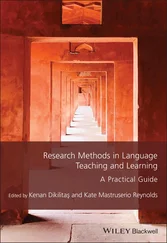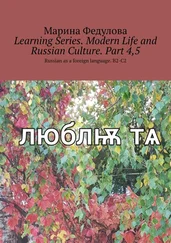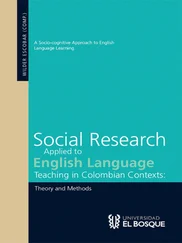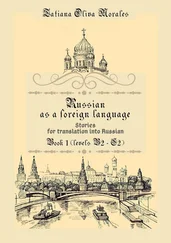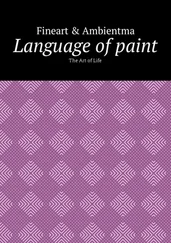Steiner’s vision of an Erziehungskunst goes clearly beyond the central role which the arts play in the Waldorf curriculum: the development of a generally artistic attitude ( Gesinnung ) incorporating artistic sensitivity, flexibility and discipline is viewed as a vital educational process, for pupils, as well as for their teachers:
And one shall see what this developing human being – the child – can experience through art. The intellect first truly awakens in the encounter with art. A sense of responsibility develops when, out of an inner motivation, material is artistically mastered in freedom. It is the artistic sense of the teachers and educators which brings those qualities of the soul into a school that allow for happiness in seriousness and for character in joy. Through intellectual understanding, nature is merely comprehended; through artistic sensibility it can be experienced.71
[Und man wird dann sehen, was dieser werdende Mensch – das Kind – an dem Erleben der Kunst wird. Der Verstand wird an der Kunst erst zum wahren Leben erweckt. Das Pflichtgefühl reift, wenn der Tätigkeitsdrang künstlerisch in Freiheit die Materie bezwingt. Künstlerischer Sinn des Erziehenden und Lehrenden trägt Seele in die Schule hinein. Es lässt im Ernste froh sein, und in der Freude charaktervoll. Durch den Verstand wird die Natur nur begriffen; durch die künstlerische Empfindung wird sie erst erlebt.]
In deeply felt artistic experience, he sees profound transformative possibilities:
The child who has been led into music and poetry comes to feel the human experience of being deeply moved by an emotional Ideal. His humanity receives a further dimension of humanity.72
[Das Kind, das in das Musikalische und Dichterische eingeführt wird, erfühlt das Ergriffensein der Menschennatur durch ein idealisch Seelisches. Es empfängt zu seiner Menschlichkeit eine zweite.]
He also sees the potentials of artistic processes in freeing and educating the human spirit:
Art is an ongoing process of the emancipation of the human spirit and at the same time educates humanity to act out of love.73
The full significance of such developmental possibilities can only be realized when the artistic element and attitude become integrated into every area of teaching and learning:
None of this will be achieved if art is only placed alongside the other aspects of education and teaching if it is not organically integrated into the whole approach. All teaching and education should be a whole. Knowledge, preparation for life, practicing technical skills should all flow into a need for art; artistic experience should instil a longing to learn, to observe and the wish to acquire competence.74
Both in the prominent role which the Arts play in the Waldorf curriculum, as well as in the role of artistic processes in all aspects of teaching and learning, there are clear parallels to many of the dominant ideas of the Kunsterziehungsbewegung and, in fact, to many of the educational principles of the other reform movements of that time. A decisive parallel between Weber and Steiner’s writings on this theme is the importance both educators place on the teacher’s personal artistic development as the requisite basis for artistry in teaching.
The most far-ranging differences in their understanding of teaching as an art lie in the significance of Steiner’s anthroposophically oriented anthropology ( Menschenkunde) as constituting the underlying basis of Steiner’s understanding of how artistic processes help to form the developing child. A further decisive distinction can be found in his conception of the artistry of the teacher as resulting, in part, from continual meditative studies, which become a basis for her intuitive sense of what is required in a concrete pedagogical situation.75 Johannes Kiersch in his introduction to Steiner’s educational texts writes,
The living knowledge of the human being that the anthroposophically oriented anthropology [ Menschenkunde ] gives to him and in which he learns to meditatively immerse himself, opens up a pedagogical perspective for him through which he can see what has to be done in a concrete situation. This knowledge disappears while he is acting; it becomes transparently open to the demands of the continuously emerging present moment.76
The spiritual dimensions which can be found in Steiner’s pedagogy reflected both in his concrete understanding of the nature of the developing child, as well as in specific requirements for teaching and a teacher’s education, can be seen as clearly separating Waldorf Education from other reform movements of both his time and our own.
1.2.9 Reform Movements – Overview
A comparison of Weber’s and Steiner’s writings makes clear that behind the general concept of viewing teaching as an art, similarities as well as distinctions exist. Although many of these aspects were unique to these particular two movements, the same phenomenon would be apparent in comparing any of the other reform movements of that period. Clearly, the concept of teaching as an art prevalent at that time was broad enough to include a range of standpoints, each with their own specific emphasis and focus.
The conflicts which emerged in this period between the proponents of viewing teaching as an art and the advocates of an experimental pedagogy based on viewing teaching and learning in the context of an educational science, evidence parallels to discussions still held today. These parallels are particularly striking when one considers the vastly different societies in which these debates have taken place. In looking back at the educational reform movements at the beginning of the 20 thcentury, A. Flitner points out that practically all the questions which were debated and put into educational practice at that time, were still being debated at the end of the century:
In the first third of the century, practically all the determinative questions of ‘modern’ education were already raised and nearly all the ideas that inform our current questions and discussions were put into practice.77
In the midst of national and international educational crises in the first decades of the 21 stcentury, this appears to be no less relevant. Despite the almost inconceivable differences between the German Kaiserreich and contemporary European and/or American societies, the underlying issues have remained constant.
1.2.10 The Teacher as Artist: Later Developments in Germany
Between the years 1933–45, conflicts between the advocates of a Künsterpädagogik and the Lernschule were fully eclipsed by the dominant Nazi educational ideology which adopted only those elements which served its own purposes. After WW II elements of the ideas of the reform movements in regard to the concept of teaching as an art can be found in the writings of a number of prominent educational reformers including Wilhelm Flitner, Friedrich Copei, Heinrich Roth, Martin Wagenschein and Eduard Spranger. In his historical overview of this tradition, Didaktik als Lehrkunst published in 1982, Baldur Kozdon views Gottfried Hausmann’s Didaktik als Dramaturgie des Unterrichts (1959) as the last major work in the long tradition of viewing teaching in an artistic context; a tradition whose heyday had been reached in the reform movements at the beginning of the century.
Hausmann’s wide-ranging discussion of connections between the historical development of dramaturgical principles in theatre and parallel developments in the history of didactics certainly stands as a unique contribution to this field. Moreover, his extensive discussion of the relevance of key dramaturgical principles for establishing an artistic methodology of teaching must also be seen as constituting one of the most extensive treatments of this theme. However, in the context of a period in which this approach was no longer considered relevant, his work does not appear to have had any significant effect/s on the educational thinking or discussions of that time, or later ones.
Читать дальше

